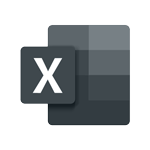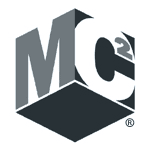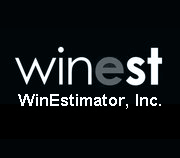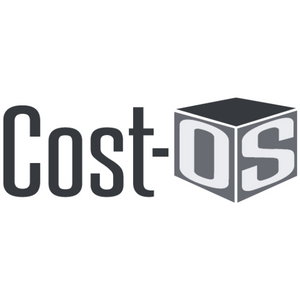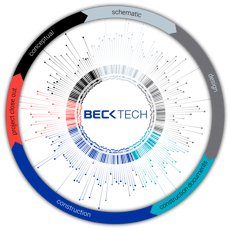Choosing the Right Construction Estimating Software for 2025: What to Look For

Accurate and efficient cost estimation is crucial to project success in the construction industry. The accuracy of your estimates directly impacts your profitability and ability to stay within budget. In today’s fast-paced environment, relying on manual calculations and traditional methods can be time-consuming and prone to errors. That’s where construction estimating software comes in. Choosing the right software can streamline your estimating process and help you save time, improve accuracy, and lead to better project outcomes. As senior preconstruction manager at Saunders and DESTINI Estimator user Kay Rasmussen says, the right features in estimating software “combine into significant time savings without sacrificing accuracy."
Understanding Construction Estimating Software
Estimating software is designed to assist construction professionals in calculating the costs associated with construction projects. These tools provide a framework for gathering, organizing, and analyzing cost data, offering reliable predictions for everything from materials to labor, equipment, and more. With the increasing complexity and competitiveness of the construction industry, leveraging digital tools to accurately identify project costs and efficiently manage resources is essential.
Various types of construction management software are available today, each offering distinct functionalities. Some offer digital takeoff software that helps quantify needed materials, while some offer software that integrates cost databases for accurate pricing. Additionally, some tools may have advanced features to model various project scenarios or track construction management progress in real time.
Let’s look at the essential features for selecting the best construction estimating software, focusing on the key aspects that ensure accurate estimating and cost estimation.
Key Features to Look for in Estimating Software
When evaluating different options for estimating tools, there are several critical features that you should consider:
- User-Friendly Interface
No matter how advanced the features are, your team will struggle to get the most out of estimating software if it’s not intuitive. A user-friendly interface is crucial for teams of varying technical skill levels. The tool should allow your estimators to input data, adjust parameters, and easily generate reports. A streamlined interface saves time, reduces training costs, and minimizes errors.
- Accurate Construction Estimates
An estimating solution can produce accurate construction estimates. Accuracy is critical for staying within budget and meeting project deadlines. Look for software that integrates up-to-date cost databases, which can provide real-time pricing for materials, labor, and equipment. The best software allows users to access these databases, ensuring estimates reflect current market conditions.
- Integration Capabilities
Choosing software that integrates well with your other systems is essential. A construction project involves various stages, and information must flow seamlessly between teams, contractors, and clients. Integration with tools, like project management software or accounting platforms, ensures that estimates and budget tracking remain consistent across the entire construction business.
- Cloud-Based Accessibility
A cloud-based platform allows team members to access estimates and project data from anywhere. This flexibility is important for large teams working at multiple locations or those needing remote access to up-to-date estimates. Cloud-based tools help facilitate collaboration and ensure everyone involved can access the latest information, which is crucial for accurate estimating.
- Customizability and Advanced Features
Construction projects vary widely, so your software needs to be adaptable. A high-quality estimating tool should be customizable to meet the specific needs of your business. For example, you might require the ability to create custom templates or adjust cost categories. Advanced features like scenario modeling, where you can predict how changes in one part of the project impact overall costs, can also add tremendous value by improving project planning.
- Support and Training
Look for software that offers strong customer support and resources for onboarding and training. Construction estimating software can be complex, and your team will need help getting up to speed. Quality estimating features should be supported by training materials, user guides, and responsive customer service teams to assist with troubleshooting.
What Makes the Best Construction Estimating Software?
When it comes to finding the best construction estimating software, several factors determine the right fit. Here are the key elements to keep in mind:
- Comprehensive Features
The best estimating software should provide a basic set of tools and offer a wide range of estimating features that address all aspects of construction cost estimation. This includes tools for labor costs, material takeoffs, equipment usage, and overhead costs. The more comprehensive the software, the better it will serve your needs throughout the entire lifecycle of the project.
- Industry-Specific Accuracy
Construction projects require precision, and an accurate estimate is critical to project success. The best software offers access to reliable cost databases and up-to-date pricing, ensuring that your estimates reflect the current market rates for materials and labor. Using outdated or inaccurate data can lead to over-budget projects.
- Seamless Collaboration
Construction projects typically involve numerous stakeholders, including contractors, subcontractors, architects, and clients. The software you choose should facilitate easy communication and collaboration. The ability to share estimates, make changes in real time, and track updates can drastically improve project efficiency and reduce misunderstandings.
- Scalability
As your business grows, your software should be able to grow with you. That’s why you should choose a tool that can handle larger, more complex projects than you currently work on. Scalability ensures that the estimating software can handle increased project volume without sacrificing performance or requiring a switch to a new system.
- Cost-Effectiveness
You may not need the most expensive software, but it’s important to find a solution that offers good value for the features it provides. Many companies offer free trials of their software, which can help you assess whether the solution aligns with your business needs and fulfills the promises it makes.
What is the Best Construction Estimating Software?
When searching for the best construction estimating software, one name that consistently stands out in the industry is DESTINI Estimator by Beck Technology. This estimating solution is tailored for those who need a comprehensive, flexible, and accurate way to manage construction estimating.
Why DESTINI Estimator Stands Out
Destini offers a unique combination of advanced features and user-friendly functionality, making it an excellent choice for construction professionals. Here's why:
- Data-Driven Decisions: DESTINI Estimator is built on data, providing teams with access to real-time cost data for a more accurate view of project financials. This ensures that cost estimation is based on the most up-to-date and relevant pricing information.
- Customizable Solutions: DESTINI Estimator can be customized to the specific needs of your construction business. The software offers flexible templates that can be adjusted to fit the scope and nature of your projects, ensuring that you only pay for the features you need.
- Comprehensive Project Lifecycle Coverage: Unlike other solutions that focus only on construction estimating, DESTINI Estimator covers the entire project lifecycle. From early-stage conceptual estimates to final cost tracking and post-construction analysis, DESTINI Estimator helps maintain consistency and accuracy across every phase.
- Advanced Integration: DESTINI Estimator integrates with other software used in construction management, making it easier to share data and ensure that all stakeholders have access to accurate and up-to-date information. This integration feature helps improve project workflows and minimize errors.
How to Choose the Right Construction Estimating Software for Your Business
Selecting the right estimating software depends on several factors, including your business size, project scope, and the features you need. Here’s one way to decide which software is right for your business.
- Identify Your Needs: Start by defining what you need from the software. Do you require advanced features like scenario modeling? Or do you need something simpler to handle basic estimates? Understanding your specific requirements will help you narrow down your options.
- Consider Integration: Make sure the software integrates well with your existing tools such as your project management software or accounting platform. Seamless integration can save time and reduce errors.
- Request a Demo: Before deciding, request a free trial or demo of the software. This will allow you to test the features and determine if it meets your needs. A hands-on trial helps you evaluate the interface, functionality, and overall user experience.
- Scalability: Choose software that can grow with your business. You don’t want to outgrow your estimating solution too quickly. Scalability ensures you can keep using the software as your project volume and business size increase.
Choose Your Estimating Software
Choosing the right construction estimating software is important for your project’s success. Look for software that offers accuracy, flexibility, and integration with your existing tools. Whether you opt for a tool like DESTINI Estimator or another solution, ensure that it fits your business’s unique needs to improve efficiency, reduce costs, and deliver better project outcomes.

-1.png?width=112&height=112&name=image%20(4)-1.png)





